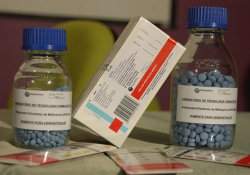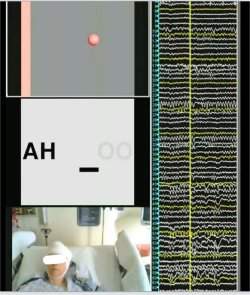 |
Chronic inhalation of polluted air appears to activate a protein that triggers the release of white blood cells, setting off events that lead to widespread inflammation, according to new research. |
This finding narrows the gap in researchers' understanding of how prolonged exposure to pollution can increase the risk for cardiovascular problems and other diseases.
The research group, led by Ohio State University scientists, has described studies in mice suggesting that chronic exposure to very fine particulate matter triggers events that allow white blood cells to escape from bone marrow and work their way into the bloodstream. Their presence in and around blood vessels alters the integrity of vessel walls and they also collect in fat tissue, where they release chemicals that cause inflammation.
The cellular activity resembles an immune response that has spiraled out of control. A normal immune response to a pathogen or other foreign body requires some inflammation, but when inflammation is excessive and has no protective or healing role, the condition can lead to an increased risk for cardiovascular diseases, diabetes and obesity, as well as other disorders.
Though many questions about the beginning of this process remain unanswered, the scientists predict that the damage may originate in fluid that lines the lung. Tiny molecules in this fluid change structure after being exposed to polluted air, and that change appears to set off this cascade of damaging white blood cell behavior by activating a receptor called "toll-like receptor 4."
The job of toll-like receptor 4, or TLR4, is to recognize specific characteristics of pathogens and then send out signals to activate other players in the immune system. Mice that lack this molecule don't produce as much inflammation after exposure to pollution as do normal mice, suggesting that TLR4 has a prominent role in the body's response to chronic exposure to particulate matter.
"Our main hypothesis is that particulate matter stimulates inflammation in the lung, and products of that inflammation spill over into the body's circulation, traveling to fat tissue to promote inflammation and causing vascular dysfunction," said Sanjay Rajagopalan, professor of cardiovascular medicine at Ohio State and senior author of the study. "We haven't identified the entire mechanism, but we have evidence now that activation of TLR4 influences this response."
The research is published in a recent issue of the journalCirculation Research.
Many of these researchers already have documented the link between chronic exposure to polluted air and high blood pressure, diabetes and obesity. They now aim to pinpoint how and where the earliest damage occurs.
For this study, the scientists exposed different groups of mice to either filtered air or air containing between eight and 10 times more fine particulates than the ambient air in an urban environment -- an average of approximately 111 micrograms per cubic meter. The mice were exposed for six hours per day for five days per week for at least 20 weeks.
The polluted air contained fine particulates that are so tiny -- 2.5 micrometers or smaller in diameter, or about 1/30th of the average width of a human hair -- that they can reach deep areas of the lungs and other organs in the body.
For most of the experiments, the effects of exposure to pollution were compared in normal mice and mice deficient in TLR4.
After exposure to polluted air, the normal mice showed higher levels of white blood cells known as inflammatory monocytes in their spleens and circulating in their bloodstream than did mice breathing filtered air. Deficiency of TLR4 diminished this effect in mice breathing dirty air. That suggested that if the receptor is not active, the monocytes will not be released.
Other findings implicated yet another potential compound involved in the damage. The increase in monocytes was accompanied by an increase in superoxides in the blood vessels. These compounds are designed to kill pathogens, but they are toxic if they have no bug to fight. They are produced by an enzyme called NADPH oxidase -- and NADPH oxidase is found inside monocytes.
In an experiment comparing normal mice and mice lacking a component of the NADPH oxidase enzyme, the mice without the enzyme produced fewer oxygen free radicals in response to polluted air than did normal mice.
"The free radicals can have a high impact on vascular function," explained Thomas Kampfrath, a postdoctoral researcher in Ohio State's Davis Heart and Lung Research Institute and first author of the study. Indeed, an examination of the aortas of these mice showed that vessels in animals exposed to polluted air exhibited exaggerated responsiveness to stressors -- a sign of incipient hypertension, or high blood pressure, Kampfrath said.
Yet another model of mice genetically altered so their monocytes express yellow fluorescent protein allowed the researchers to observe exactly where the monocytes traveled in segments of mouse muscles and fat tissue. In mice breathing polluted air, the monocytes began to stick to blood vessel walls and fat cells.
"This is a sign that the monocytes are responding to inflammatory stimuli -- which in our case is particulate matter -- and then in turn they can cause more inflammation because they release inflammatory factors," said Rajagopalan, who is also the associate director for vascular research at the Davis Heart and Lung Research Institute.
Those factors include what are called proinflammatory cytokines, including TNFa (tumor necrosis factor alpha), MCP-1 (monocyte chemoattractant protein) and IL-12 (interleukin-12). These are chemical messengers that cause inflammation, most often to fight infection or repair injury. When they circulate without an infection to fight, the body experiences excess inflammation.
Mice breathing polluted air showed higher levels of these cytokines in their blood than did mice breathing filtered air. And the mice deficient in the TLR4 receptor showed dramatically lower levels of the cytokines.
"Most of our experiments initially assessed global inflammation. The monocytes are virtually everywhere in the body," Rajagopalan said. "And then we asked the question, how does it happen, and where does it come from?"
Kampfrath in particular is focused on the lung's role in this process. Those same cytokines were also significantly elevated in the lungs of mice that had experienced prolonged exposure to polluted air, and the lack of TLR4 activation lowered this effect.
Protective fluid in the lung contains molecules called phospholipids, and this research showed that those molecules become oxidized -- meaning a chemical reaction changes their shape and function -- after they are exposed to polluted air. That much is determined.
And a series of experiments in different types of white blood cells demonstrated that when the cells are treated with oxidized phospholipids, they will release those proinflammatory cytokines. The lack of TLR4 in those cells diminishes these effects.
These experiments confirmed that these activities in the lung could trigger inflammation seen throughout the rest of the body in mice exposed to polluted air. The question that remains unanswered, however, is the process by which phospholipids become oxidized after chronic lung exposure to dirty air, Kampfrath said.
"After exposure, there is an increase in oxidized phospholipids in the lung fluid. We know it happens, but we don't know how," he said. "What we do know is that the increase in oxidized phospholipids in turn promotes inflammation."
In an editorial in the same issue of Circulation Research, Daniel Conklin of the University of Louisville wrote, "Is the mystery solved regarding the mechanism how inhaled [fine particulate matter] exposure stimulates vascular inflammation and injury? Well, probably not completely, but the present scenario laid out … connects findings from their study with many disparate human and animal epidemiological/exposure studies into a plausible story."
This research was supported by grants from the National Institutes of Health and DFG (German Research Foundation).
Co-authors include Andrei Maiseyeu, Zhekang Ying, Zubair Shah, Jeffrey Deiuliis, Nisharahmed Kherada, Sampath Parthasarathy, Susan Moffatt-Bruce and Qinghua Sun of the Davis Heart and Lung Research Institute; Xiaohua Xu of the Division of Environmental Health Sciences; and Kongara Reddy and Nitin Padture of the Department of Materials Science and Engineering, all at Ohio State; Robert Brook of the University of Michigan; Lung Chi Chen of New York University; and Henning Morawietz of the University of Technology in Dresden, Germany.


2042-3306/asset/olbannerleft.gif?v=1&s=3e3da43e68821090019ddc43e407e5c5960d1b42)








